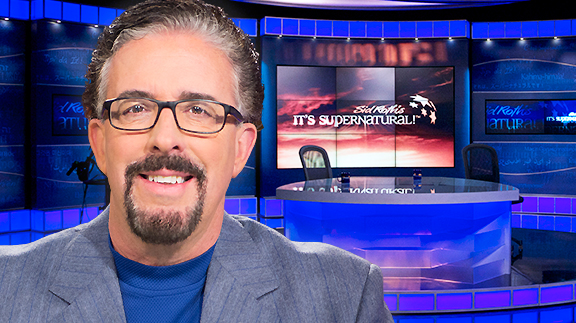
Perry: So here’s the point. See when Jesus says that in the Book of Revelation, we’re in the West, and if you don’t understand a little Jewish history, all you got to do is understand a little Jewish history about the Temple, you say ‘that’s what Jesus is talking about.” Everybody in his day would have understood it. Because the Temple, even though the Book of Revelation’s written in 95 A.D., the Temple was still be fresh on people’s mind. So a couple of things about the Book. John, uh, one of the early father’s says that John, I may even have that quote here somewhere but if I don’t I can, I can share it with you, that John actually would have worn the miter of the priesthood. In other words— let me ask you this, John— the trial of Jesus. Who gets into the trial? John. Who gets Peter into the trial? John. Can I ask you question? How did John get into the trial? And the answer is he knew the priest, he knew the priestly family, he knew the people that were there. So John writes the Book of Revelation from a priestly perspective and let me tell you something else he does. Ready? He uses all kinds of symbolisms of the feasts of Israel in the Book. And again most people are never going to catch this ‘til you know the feasts and you understand for example, in one place it talks about the, a multitude that has come out of great tribulation waving palm branches in their hands. That’s the “Feast of Tabernacles.” And these martyrs have come out of every nation. Tribulation— the Tabernacles is all the nations that celebrate. Uh, let me give you another one. Do you remember reading in Revelation where it says that Michael the Archangel comes down and hurls the devil out of the second heaven and casts him to the earth? That’s the “Day of Atonement” when they would take “Azazel,” the scapegoat and they would throw it off of the mountain to its death to meet its doom. See so when you understand the feasts here again you start seeing all the analogies and the pictures of what John is writing. But here’s what I want to show you. I want to take you and, uh, show you this about the comparison, for example, of the prophet Ezekiel and John. Both were priests and were linked to the priesthood, Ezekiel chapter 1 and also the history I was talking about a moment ago. Both were held captive against their will, Ezekiel 1:1, Revelation 1:9. Both were near water when their visions occurred. Now I don’t know what there is about water, all these prophets are hanging around river banks when the angels show up, Ezekiel 1:1 and John was surrounded by the Aegean Sea. Both saw heaven open and saw the visions of God, Ezekiel 1:26, Revelation 4:2. Both saw the four-faced living creatures. Now that’s important. In Ezekiel 1 and 10, Ezekiel saw the “cherubim” and also Revelation 4 and 7, John saw the same thing. Both saw the throne of God and God sitting on the throne. It’s a fascinating story in Ezekiel 1:26, Revelation 4:3. There was a rainbow around the throne, Ezekiel 1:28, Revelation 4:3. Both saw a scroll filled with trouble and woe, Ezekiel chapter 2:10, Revelation chapter 6. Both were told to eat the scroll and prophesy, Ezekiel 3:1, Revelation 10:9. Both saw angels mark the head of the righteous, Ezekiel 9:4, Revelation 7:1 through 3. Both saw judgment strike Israel in Jerusalem, Ezekiel 14, Revelation 11:13. Both saw a Jewish remnant, Ezekiel 12:16, Revelation 12, verse 17. And so when you look at this you say to yourself wait a minute. Ezekiel and John are actually paralleling their visions the same. Now here’s an example again of what we see in the Book of Revelation has a foundation in the Old Testament.
Tags: It's Supernatural, Sid Roth
